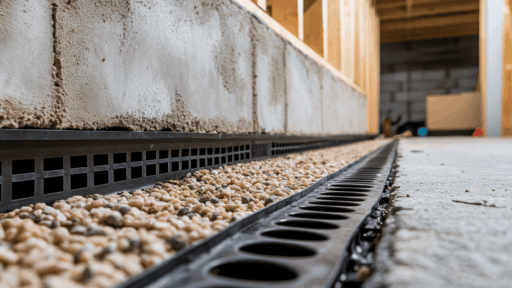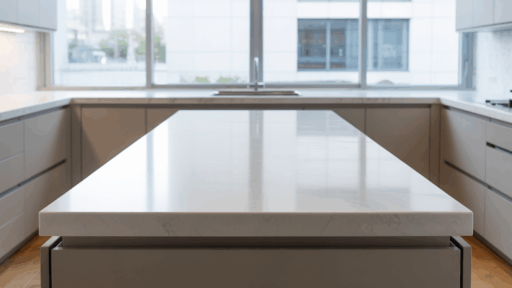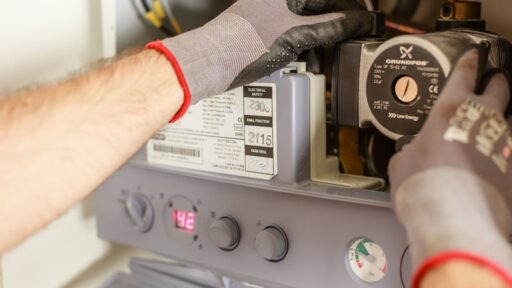Did you know that homeowners who guess their painting costs are wrong by an average of 40%?
This costly mistake can blow your budget and leave projects half-finished. Painting your house can refresh its look and increase its value, but figuring out the cost can be tricky.
If you’re planning to paint the inside, outside, or both, several factors will affect your final bill.
From square footage and paint quality to prep work and labor rates, understanding these variables helps you avoid expensive surprises.
This easy guide breaks down typical painting costs, explores different paint options, and their price differences.
You will also learn how to use online calculators to get accurate estimates for your specific project, ensuring you budget correctly from the start and complete your painting project successfully.
Interior and Exterior Painting Cost Estimates
Understanding typical painting costs helps you set realistic expectations for your project. Professional painting services vary widely based on your home’s size and the complexity of the work involved.
Interior Painting Costs by Home Size
| Home Size | Cost Range |
|---|---|
| 1,000 sq ft | $2,000 – $6,000 |
| 1,500 sq ft | $3,000 – $9,000 |
| 2,000 sq ft | $4,000 – $12,000 |
| 2,500 sq ft | $5,000 – $15,000 |
| 3,000 sq ft | $6,000 – $18,000 |
Cost to Paint the Exterior of a House
| Home Size | Cost Range |
|---|---|
| 1,000 sq ft | $1,500 – $4,000 |
| 1,500 sq ft | $2,250 – $6,000 |
| 2,000 sq ft | $3,000 – $8,000 |
| 2,500 sq ft | $3,750 – $12,000 |
Interior painting typically costs $3-6 per square foot, while exterior work runs $1.50-4 per square foot.
The wide price ranges reflect differences in paint quality, surface condition, and local labor rates. Simple rooms with minimal trim cost less, while complex layouts with lots of detail work push prices higher.
Pro Tip: Exterior painting often costs less per square foot because painters can work faster on large, flat surfaces compared to detailed interior work with multiple rooms and trim.
Factors Affecting the Cost to Paint a House

Several key elements determine your final painting bill, and understanding these factors helps you plan your budget more accurately.
- Home Size and Layout: Larger homes cost more, but layout complexity matters too. Open floor plans are cheaper than homes with many small rooms and doorways.
- Paint Type and Quality: Paint prices range from $25-40 per gallon for basic options to $50-80 for premium brands. Higher-quality paints provide better coverage and last longer.
- Preparation Work: Surface prep significantly affects costs. Basic cleaning is included in quotes, but extensive repairs or priming add substantial expenses.
- Location and Labor Costs: Labor rates vary by region. Urban areas cost more than rural locations, and local competition influences pricing.
Each factor can significantly impact the total cost, sometimes doubling or halving your expenses depending on your specific situation.
Did You Know? Professional painters typically apply 20% more paint than calculated coverage rates suggest, accounting for surface texture, application method, and touch-ups.
Different Paint Types and Their Costs

Paint choice significantly impacts both upfront costs and long-term satisfaction, making it important to understand your options.
1. Standard Paints ($25-40/gallon)
Basic latex paints work well for low-traffic areas and budget-conscious projects. They provide adequate coverage but may require more frequent touch-ups.
These paints typically have a shorter lifespan of 3-5 years before showing signs of wear or fading. While they’re economical upfront, factor in the cost of more frequent repainting when calculating long-term value.
2. Premium Paints ($45-65/gallon)
Higher-end paints offer better coverage, durability, and color retention. They’re worth the extra cost for high-traffic areas or when you want long-lasting results.
Premium formulations often include advanced resins and pigments that resist scuffing, staining, and UV damage. Many come with manufacturer warranties of 10-15 years, making them cost-effective over time despite the higher initial investment.
3. Eco-Friendly Paints ($40-70/gallon)
Low-VOC and zero-VOC paints cost more but improve indoor air quality. They’re particularly valuable for bedrooms, nurseries, and homes with sensitive family members.
These paints emit fewer harmful chemicals during application and drying, reducing headaches and respiratory irritation. They’re also safer for pregnant women and children, though they may take slightly longer to cure completely.
4. Specialty Paints ($50-100/gallon)
Textured paints, high-gloss finishes, and specialty coatings like anti-microbial or stain-resistant formulas command premium prices but serve specific purposes.
Examples include chalk paint for furniture projects, magnetic paint for interactive walls, and primers designed for specific surfaces like metal or previously painted cabinets. These specialized formulations can save time and provide unique finishes that standard paints cannot achieve.
Paint quality affects final costs beyond the initial purchase. Premium paints often cover better, requiring fewer coats and less labor time.
Common Mistakes to Avoid When Estimating Painting Costs
Many homeowners make predictable errors when budgeting for painting projects, leading to cost overruns and project delays.
1. Underestimating Preparation Work: The biggest mistake is assuming the walls are ready to paint. Most surfaces need cleaning, minor repairs, and sometimes priming. Skipping proper prep leads to poor results and higher long-term costs.
2. Failing to Account for Multiple Coats: One coat rarely provides adequate coverage, especially when changing colors dramatically. Dark-to-light transitions often require a primer plus two finish coats. Budget for at least two coats in your estimates.
3. Not Factoring in Material Quality: Choosing the cheapest paint seems smart initially, but it often backfires. Low-quality paint may require more coats, fade quickly, or need repainting sooner. Mid-grade paints usually offer the best value balance.
Learning from these common mistakes can save you both money and frustration during your painting project.
Labor vs. DIY: Which Option is More Cost-Effective?
Deciding between professional painting and DIY depends on several factors, including your budget, timeline, and skill level.
This comparison helps you weigh the pros and cons of each approach to make the best decision for your situation.
| Factor | Professional Painting | DIY Painting |
|---|---|---|
| Cost | $3,000-12,000 (average home) | $200-800 (materials only) |
| Time | 2-5 days | 1-3 weeks (weekends) |
| Quality | Professional finish, warranty | Varies by skill level |
| Equipment | Included in the service | Need to buy/rent ($200-500) |
| Prep Work | Handled by professionals | Your responsibility |
| Best For | Complex projects, tight timelines, high ceilings | Simple rooms, flexible schedule, budget-conscious |
| Cons | Higher upfront cost | Time-intensive, potential mistakes |
| Pros | Fast, professional results | Significant cost savings |
When to Hire Professionals: Consider professional help for exterior work, high ceilings, extensive prep work, or tight timelines. Complex color schemes and detailed trim work also benefit from professional expertise.
When DIY Makes Sense: Simple interior rooms with minimal prep work are good DIY candidates. If you enjoy the process and have flexible timing, DIY can save significant money on straightforward projects.
Tips for Saving Costs and Using Online Calculators

Smart planning can reduce painting expenses without sacrificing quality, helping you get the best value for your investment.
Online tools make it easier than ever to estimate costs accurately and plan your budget effectively.
Money-Saving Strategies
- Handle prep work yourself – cleaning walls, moving furniture, and minor repairs can save $500-1,500
- Buy paint during seasonal sales – spring and fall often bring 20-30% discounts.
- Choose mid-grade paint over premium for most applications
- Get multiple quotes – prices can vary 25-40% between contractors
- Paint during the off-season when some contractors offer lower rates
Using Online Cost Calculators provides more accurate estimates than general price ranges. These tools consider specific factors affecting your project cost.
Most Calculators Require
- Home square footage and room count
- Current paint condition
- Desired paint quality level
- Your geographic location
- Special features like high ceilings or extensive trim
To get accurate estimates, measure carefully. For interiors, calculate wall area by multiplying room dimensions by ceiling height, then subtract windows and doors.
For exteriors, measure each wall separately, including gables and dormers.
Many paint manufacturers and home improvement retailers offer free estimation tools. Input detailed information for the most accurate results, but remember these provide starting points – professional quotes give final pricing.
Pro Tip: Most online calculators automatically add 10-15% for waste and touch-ups. This buffer accounts for normal material loss during application and future maintenance needs.
Conclusion
Painting costs depend on your home’s size, condition, paint quality, and local labor rates. Interior projects typically range from $2,000-18,000, while exterior work costs $1,500-12,000.
Understanding common mistakes like underestimating prep work and choosing poor-quality materials helps you budget accurately.
If you choose professional services or DIY, online calculators provide valuable starting estimates by considering your specific project details.
These tools factor in customizable elements like paint type, surface condition, and regional pricing to give you realistic expectations.
Proper planning prevents costly overruns and helps you achieve the results you want within your budget. Use an online painting calculator today to get your personalized cost estimate.








